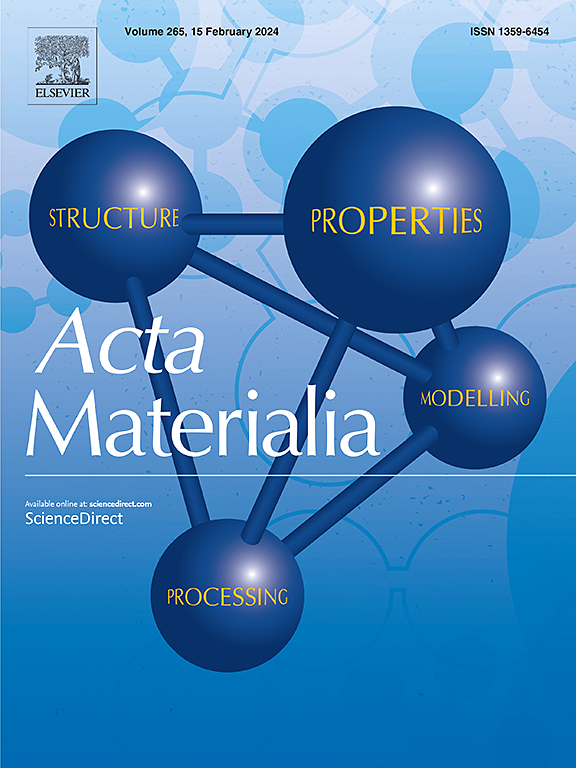塑性变形诱导强稳定纳米晶面心立方Co
IF 9.3
1区 材料科学
Q1 MATERIALS SCIENCE, MULTIDISCIPLINARY
引用次数: 0
摘要
面心立方(FCC) Co已被证实具有优异的磁性和催化性能以及机械性能。但其晶格结构在室温下是亚稳态的。在本研究中,采用累积高压扭转处理,通过同素异向转变和机械松弛过程,生成了强而稳定的纳米FCC Co。当Co晶粒细化到11 nm左右时,HCP-FCC相变被激活,形成了几乎100%纳米级的FCC Co。这种相变是通过在每个(0001)平面上连续产生孪晶断层进行的。纳米FCC Co在晶粒尺寸和晶格结构方面均表现出优异的热稳定性。在973 K下退火30 min后,晶粒未发生明显的粗化和反相转变。在纳米FCC Co中,晶界的部分位错形成了高密度的层错和孪晶,使晶界松弛,提高了热稳定性。制备的FCC Co平均晶粒尺寸为11 nm,硬度为7.98 GPa,具有较高的强度和优异的热稳定性。本文章由计算机程序翻译,如有差异,请以英文原文为准。


Plastic deformation induced strong and stable nanograined face-centered cubic Co
Face-centered cubic (FCC) Co has been confirmed to exhibit excellent magnetic and catalytic properties as well as mechanical properties. However, its lattice structure is metastable at room temperature. In the present study, by using an accumulative high-pressure torsion treatment, a strong and stable nanograined FCC Co was generated through allotropic transformation coupled with mechanical relaxation processes. As the grain size of Co was refined to about 11 nm, HCP-FCC phase transformation was activated and formation of almost 100% nanograined FCC Co. This phase transformation was through twin faults generation on every (0001) plane continuously. The nanograined FCC Co shows superior thermal stability both in grain size and lattice structure. After annealing at 973 K for 30 min, no obvious grain coarsening or reverse phase transformation was observed. High-density stacking faults and twins in the nanograined FCC Co were formed by emitting partial dislocations from grain boundaries (GBs), which may relax the GBs and improve the thermal stability. The nanograined FCC Co with an average grain size of 11 nm exhibited a hardness of 7.98 GPa, showing a good combination of high strength and excellent thermal stability.
求助全文
通过发布文献求助,成功后即可免费获取论文全文。
去求助
来源期刊

Acta Materialia
工程技术-材料科学:综合
CiteScore
16.10
自引率
8.50%
发文量
801
审稿时长
53 days
期刊介绍:
Acta Materialia serves as a platform for publishing full-length, original papers and commissioned overviews that contribute to a profound understanding of the correlation between the processing, structure, and properties of inorganic materials. The journal seeks papers with high impact potential or those that significantly propel the field forward. The scope includes the atomic and molecular arrangements, chemical and electronic structures, and microstructure of materials, focusing on their mechanical or functional behavior across all length scales, including nanostructures.
 求助内容:
求助内容: 应助结果提醒方式:
应助结果提醒方式:


